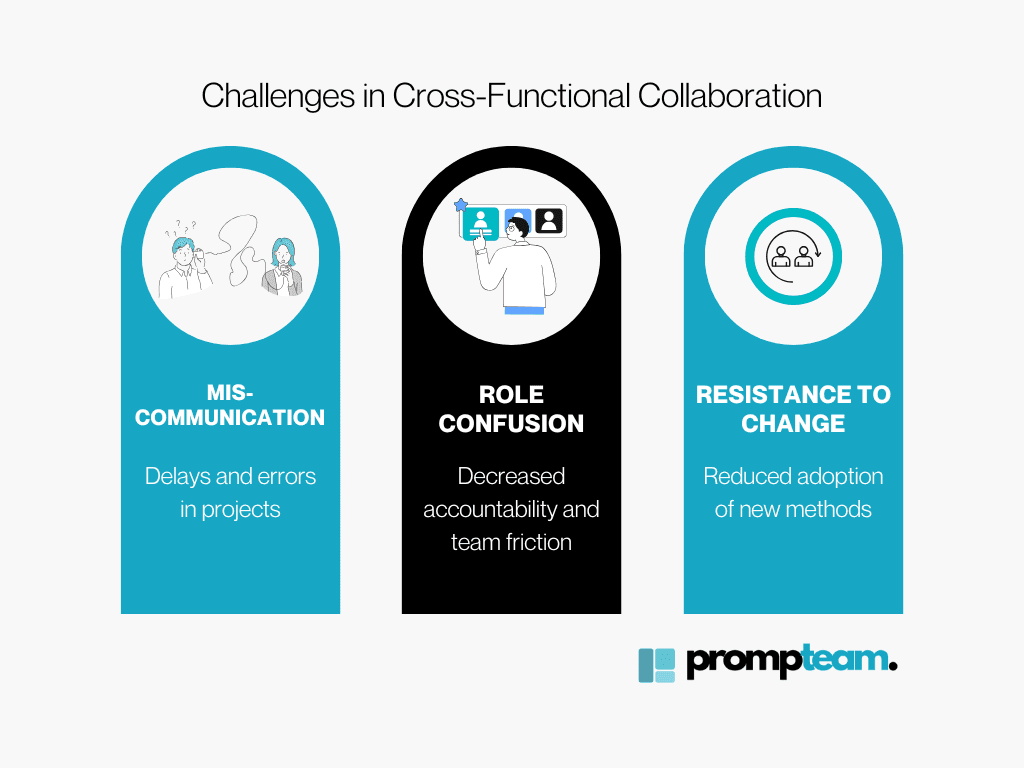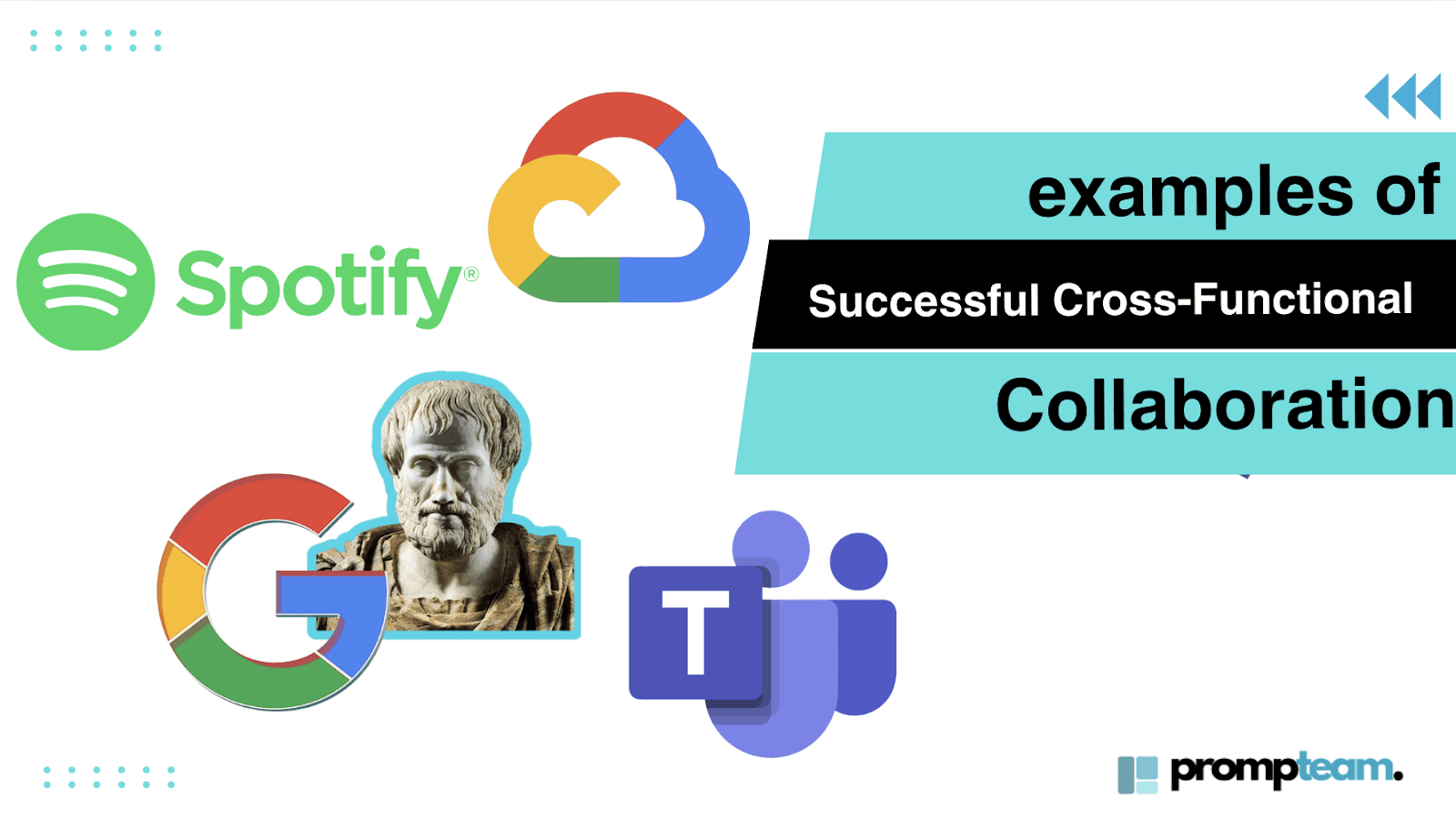
Cross-functional Team Collaboration: Benefits and Application
High collaboration boosts job satisfaction by 30%, cuts turnover intent by 20%, slashes burnout by 20%, and makes teams 50% more likely to nail their tasks.
Cross-functional collaboration brings together people from different company parts—marketing, sales, engineering, and finance—to work toward a common goal. This teamwork breaks down walls between departments, sparks creativity, and helps the company make better, faster decisions.
With customer needs constantly changing and businesses needing to adapt quickly, working across teams has become even more critical.
In this article, we’ll explore cross-functional collaboration and some practical tips for making it work.
What Are Cross-Functional Teams?
Cross-functional teams are groups with members from various departments, each bringing their own unique expertise to achieve a shared goal.
For example, a cross-functional team might consist of individuals from marketing, finance, product development, and customer service, all working together to launch a new product.
Key Roles and Responsibilities in Cross-Functional Teams
Defined Roles: Clear roles that prevent overlap.
Shared Accountability: Each member is responsible for their role, but the team shares accountability for the outcome.
Effective cross-functional teams thrive in a positive environment where open communication and mutual respect create a supportive atmosphere.
Strong leadership is also very important, as leaders are the ones who guide collaboration, resolve conflicts, and keep everyone on track.
Why Cross-Functional Team Collaboration Matters
Cross-functional team collaboration offers many advantages, from boosting creativity to optimizing resources. Let’s look into the top benefits with real-world examples to highlight this approach's impact.
Creativity and Innovation
When team members from different backgrounds come together, they bring fresh perspectives that can spark new ideas. Research by Harvard Business Review shows that diverse teams can boost innovation revenue by 19%.
Example: Apple’s iPhone Development
When developing the iPhone, Apple combined the expertise of software engineers, hardware designers, and marketing teams. This collaboration allowed them to address technical challenges, design a sleek product, and successfully launch it to the market.
Improved Communication
Cross-functional teams break down communication barriers so departments stay on the same page. A McKinsey study found that organizations with good communication practices see 25% lower employee turnover and 20% higher customer satisfaction.
Example: Google Maps Development
For Google Maps, Google brought together engineers, product managers, data analysts, and designers. This team structure allowed for open communication so everyone could contribute ideas and make Google Maps the go-to app for navigation.
Greater Agility
Cross-functional teams can respond quickly to shifts in customer preferences or market trends. According to Deloitte, 83% of digitally advanced companies rely on cross-functional teams compared to only 55% of early-stage organizations.
Example: Spotify’s Agile Squads
Spotify uses a “squad” model, where small, autonomous teams work on specific product features. These squads include members from different disciplines and can make decisions without waiting for approval, helping Spotify stay competitive in the music streaming industry.
Resource Optimization
Pooling resources across departments can prevent duplication of effort, saving time and money.
A report by the global market intelligence firm IDC, Fortune, shows that companies that share knowledge effectively avoid up to $31.5 billion in annual losses due to poor knowledge sharing.
Example: Procter & Gamble’s Connect + Develop Program
P&G’s Connect + Develop program partners with external innovators, combining internal and external expertise to create products like the Swiffer. This approach reduces R&D costs and accelerates product development.
Challenges in Cross-Functional Collaboration
While cross-functional collaboration offers great benefits, it also comes with challenges. Miscommunication, role confusion, and resistance to change can create friction.
Here are a few common issues:

Challenges in Cross-Functional Collaboration
Misaligned priorities, unclear roles, and resistance to change can disrupt collaboration, with team members focusing on their own goals, overlapping tasks, or struggling to adapt.
Best Practices for Effective Collaboration
Creating an effective cross-functional team involves more than assembling people from different departments. It also requires careful planning, alignment, and tools to help everyone work together smoothly.
Set Clear Objectives and Key Performance Indicators (KPIs)
Every effective cross-functional team starts with a clear purpose. Setting specific, measurable goals and key performance indicators (KPIs) aligns everyone on the team, giving them a shared destination to work toward.
KPIs Provide Direction and Focus: When team members understand the “why” behind their efforts and what success looks like, they’re far more likely to stay focused and invested.
A study by ClearCompany found that 70% of employees say they don’t understand their company’s goals, which can lead to disengagement.
KPIs Foster Accountability: KPIs provide a concrete way to track individual and team performance.
KPIs Encourage Continuous Improvement: Regular check-ins on KPIs allow for real-time adjustments, keeping the project on course and ensuring that every effort counts.
Pro Tip: Set these goals using the SMART criteria (Specific, Measurable, Achievable, Relevant, Time-bound) and regularly revisit them to adapt as needed.
Create a Detailed Collaboration Plan
Having a roadmap for your cross-functional project can be a game-changer. A collaboration plan breaks down each phase, clarifying what’s expected, who’s responsible, and when tasks need to be completed.
A Collaboration Plan Clarifies Roles and Responsibilities: Without role clarity, tasks may be duplicated or, worse, neglected. (42% of Wrike’s survey supports this)
A Collaboration Plan Maps Out Deadlines and Milestones: A timeline with deadlines keeps the team moving forward and offers a structured way to measure progress.
Fact check: The Project Management Institute (PMI) states that projects with defined milestones are 20% more likely to be completed on time.
Try checking out: 5 Most Popular Collaboration Software| Are they worth your money?
A Collaboration Plan Reduces Miscommunication: A collaboration plan minimizes misunderstandings by outlining each project stage and including details like expected deliverables and communication channels.
Pro Tip: Build regular check-ins or review sessions so team members can address potential roadblocks early.
Choose the Right Collaboration Tools
Technology is the backbone of cross-functional collaboration, especially with remote or hybrid teams. The right tools can smooth communication, simplify project management, and enhance team productivity.
Streamline Communication: Tools like Prompteam.ai allow real-time discussions, direct messaging, and organized channels by project or topic.
According to a survey by McKinsey, using social technologies can increase productivity by 20-25%.
Visualize Project Progress: Project management platforms provide a clear, visual way to track tasks, assign responsibilities, and monitor progress.
Automate Repetitive Tasks: Tools like Prompteam.ai, go a step further by incorporating AI to automate updates and insights, freeing up team members to focus on more strategic work. This saves time and reduces the risk of human error in routine tasks.
Fact check: According to McKinsey, automation could raise productivity growth globally by 0.8% to 1.4% annually, depending on how effectively it is implemented.
Pro Tip: Customize your tools to fit your team’s specific needs.
World Examples of Successful Cross-Functional Collaboration

Examples of Successful Cross-Functional Collaboration
Spotify uses Google Cloud to improve personalized recommendations and enhance user experience. Google’s Project Aristotle found that trust and open communication are essential to successful teams.
Lastly, Microsoft Teams supports collaboration by integrating tools like Word and Excel for smoother cross-departmental work.
These are just a few examples that show how collaboration and the right tools drive team success.
Wrapping Up
With remote work here to stay, digital tools and AI make it easier for teams to work together from different locations.
Cross-functional team collaboration is a powerful way to spark new ideas, solve problems faster, and boost overall success. By breaking down barriers and encouraging open communication, companies can work flexibly, use resources wisely, and build a more robust, unified team culture.
Looking to take your team collaboration to the next level? Check out our guide on How to Use ChatGPT for Team Collaboration to see how AI can help your team communicate!
